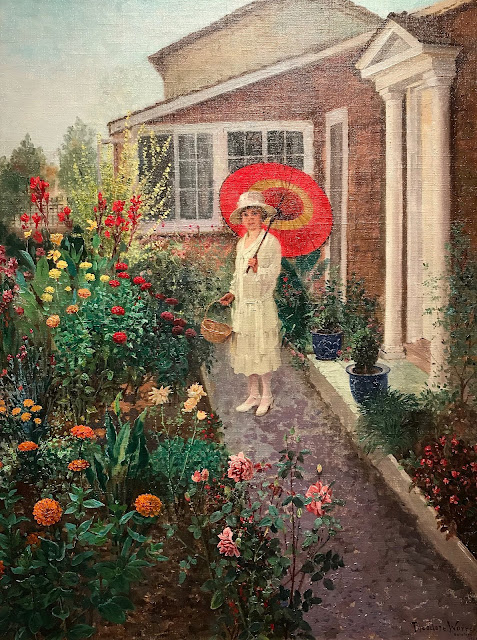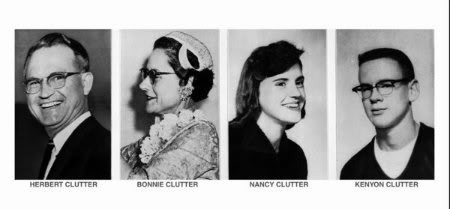Born in 1920, Wayne Thiebaud, now 98, is the grand old man of California painting. Since the 1960s, he has consistently produced cutting-edge paintings that everyone could understand and appreciate, not an easy combination to achieve.
Because Thiebaud spent several years working as a designer and a cartoonist right after high school, and he served a hitch in the Army Air Force during World War II as well, he didn't get started on his career in the fine arts until the 1950's. At the age of 30 he enrolled in Sacramento State College (now California State University, Sacramento), and by the age of 40, in 1960, he was an assistant professor at the University of California in Davis. Thiebaud remained at Davis until 1991, 31 years. This career stability gave him the freedom to pursue the art values that interested him. Thiebaud's career went through a half-dozen phases, taking up one subject after another, and adapting his technique to make his ordinary subject matter look exceptional.
Thiebaud first attracted wide-scale attention between 1958 and 1968 when his simple renderings of common food items available in diners and bakeries, cafeterias and delis fit right in with Pop art and the fad for elevating commerce in art. A special exhibit of Thiebaud's work during this period was presented as its inaugural show by the new museum at UC Davis, the Manetti-Shrem Museum.
 |
Beach Boys, 1959
Special exhibit, Manetti-Shrem Museum / Jan's photo, 2018 |
Before Thiebaud developed his signature style, he experimented with one of the styles that was popular in the Bay Area, figurative painting with heavy impasto, or thick application of paint with expressionistic brushstrokes.
 |
Pancakes, 1961
Special exhibit, Manetti-Shrem Museum / Jan's photo, 2018 |
His rediscovery of the still life was a major breakthrough. The tradition of painting food and tableware dates back to the Dutch Golden Age of the 1600s, but in the 1960s still life was considered too tame. Thiebaud reinterpreted the still life for his era, while also turning from the sumptuous repast of tradition to the lowliest, and loneliest, meal in a diner. As a work of art, this composition is interesting for the way the artist conveyed three-dimensions on a flat structure; also, the brushstrokes are flatter and more controlled, and distinct outlines define the objects.
 |
Delicatessen Counter - Bologna and Cheese, 1961
Special exhibit, Manetti-Shrem Museum / Jan's photo, 2018 |
As a subject, a deli counter is even more detached than a meal for one, removing any emotional connotations. The emphasis is on the geometry and the colors; the image is close to abstract, barely tied to reality. The brushstroke has been carefully controlled in order to define shapes as well as to suggest the texture of the deli items.
 |
Delicatessen Counter, 1961
Special exhibit, Manetti-Shrem Museum / Jan's photo, 2018 |
This painting shows amazing control of the brushstroke to define shapes and especially to mimic the textures of the food items. The artist was very interested in the way paint compares to the textures of the subjects he is depicting. The composition is based on a strong and stable geometry.
 |
Drink Syrups, 1961
Special exhibit, Manetti-Shrem Museum / Jan's photo, 2018 |
At the level of subject matter, Thiebaud documented certain objects and customs that no long appear in the same form; this row of drink syrups must have been intended for snow cones, but I believe they usually come in bottles nowadays. The dispensers have been simplified to their basic geometry, removing all associations and connotations, making them merely containers for the primary colors, with blue added in the triangular base, making this sort of an art joke. Thiebaud enlivened his dull subject with colorful and vibrant outlines.
 |
Sucker Tree, 1961
Special exhibit, Manetti-Shrem Museum / Jan's photo, 2018 |
Have you ever seen a cone, perhaps styrofoam, with branches formed by lollipops? It looks like a relic of the past. The subject gave the artist the chance to play around with angles of placement for circular shapes on a flat plane as well as with types of patterns within a circle, requiring very precise brushstrokes.
 |
Refrigerator Pies, 1962
Special exhibit, Manetti-Shrem Museum / Jan's photo, 2018 |
Thiebaud is most associated with paintings of cakes and pies, not the homemade type, but products available in bakeries. His goal here is to make the paint mimic the textures of the food; the chocolate cream pie looks luscious. He simplified the shapes to their basic geometries and arranged them uniformly, cropping out any context of the bakery.
 |
Cream Soups, 1963
Special exhibit, Manetti-Shrem Museum / Jan's photo, 2018 |
Again the artist strides the border between realism and geometric abstractionism. Oil paint has been mixed to the creaminess of soup, but the shapes have been simplified to basic circles, and modified in size and shape to indicate depth. Vibrant outlines in arbitrary colors make the shapes lift off the canvas.
 |
Football Player, 1963
Special exhibit, Manetti-Shrem Museum / Jan's photo, 2018 |
In his next phase, Thiebaud turned to the figure, however, as with his still lifes, he treats the figure more as an object than as a person, simplifying the component shapes, eliminating personal detail, and reducing the figure to a bold icon; he barely gave the figure a place to sit, though he placed it in a seated position. The helmet and mask are perfect because the artist is not interested in the football player as an individual, or even as an athlete; he is interested in the figure as object, and about playing with modeling and dimensionality.
 |
Man Sitting - Back View, 1964
Special exhibit, Manetti-Shrem Museum / Jan's photo, 2018 |
It is quite surprising to see the rear view of a lone figure in a painting. Is it a statement about alienation and isolation? Is this the poor guy about to slurp up cream soup? Or is it an exercise in treating a figure as an object, creating convincing roundness and depth of shape without any supporting context, just perfect horizontal brushstrokes. The figure doesn't even get colorful contours except in the difficult area where the bottom meets the seat.
 |
Standing Man, 1964
Special exhibit, Manetti-Shrem Museum / Jan's photo, 2018 |
This figure is all suit and no personality. Brushstrokes are virtually invisible and details have been eliminated. The question is how does light fall on a standing subject? The objective is to convey modeling through light and shadow; to make the figure look like it is really there, though there is no definition of any particular space, except for a single horizontal line to represent the floor.
 |
Woman in Tub, 1965
Special exhibit, Manetti-Shrem Museum / Jan's photo, 2018 |
Isolation, alienation, and sterility are conveyed in this image; there's no denying its emotional content. The tub is indicated by a few colorful horizontal lines on a ground of flat whites and grays. The head is photographically real but dehumanized by its position. If there is a person in that tub, she is lost in revery, her personality withdrawn and at rest.
 |
Five Seated Figures, 1965
Special exhibit, Manetti-Shrem Museum / Jan's photo, 2018 |
Like still life, the group portrait dates back to the Dutch Golden Age, but Thiebaud reinterpreted the subject to leave out the "groupiness" of the group. By their positions ignoring each other, you see these people are not in the same room at the same time. The artist probably painted a separate portrait of each person, then combined them arbitrarily into a design. He treated the figures not as people but as objects. Perhaps the artist is saying "This is the way the world is; no one pays attention to anyone else; each is a self-absorbed unit." Or it could be a study of how the light falls on faces looking 5 different directions, how light and shadow models legs and shoulders, how to create enough space for 5 chairs and get all the legs to overlap convincingly.
 |
Girl with Mirror, 1965
Special exhibit, Manetti-Shrem Museum / Jan's photo, 2018 |
Here is a girl with great breasts and a solemn expression. If the face were smiling or looking up, the image would be erotic, but the girl herself is absent from this figure. This beautiful torso is treated as an object, like one of Monet's haystacks, for studying light on organic shapes and the amazing range of shades and tints included in "skin tone." Brushwork is very refined and smooth.
Wayne Thiebaud is a traditional realist with a contemporary twist. He hides systematic variation of abstract aesthetic values in the form of ordinary objects and detached figures. During the first decade of his career, covered by the special exhibit at the Manetti-Shrem, his work grew increasingly complex and subtle, while he examined the traditions of still life and figure painting. This was only the beginning of a long and beautiful career.






























